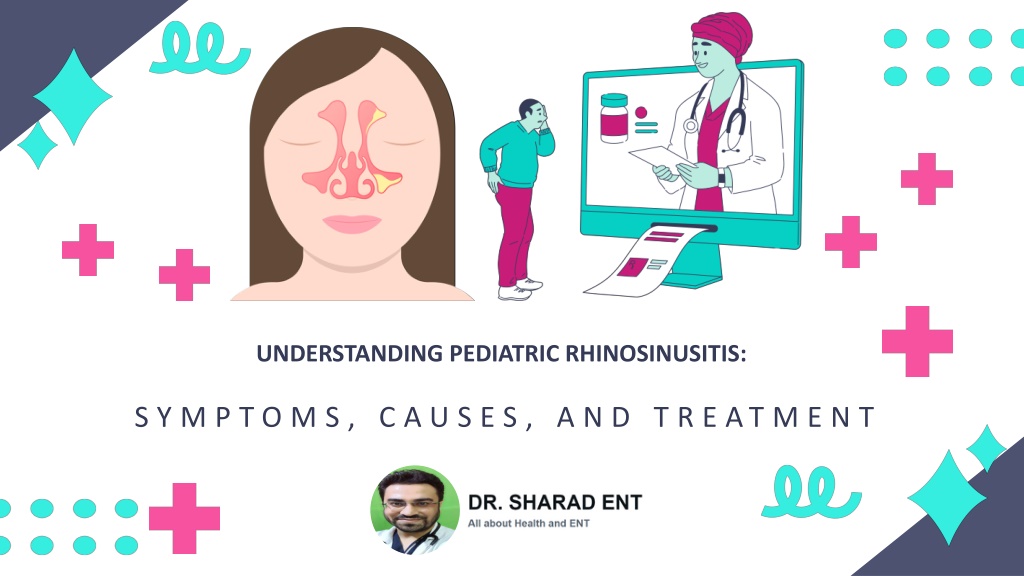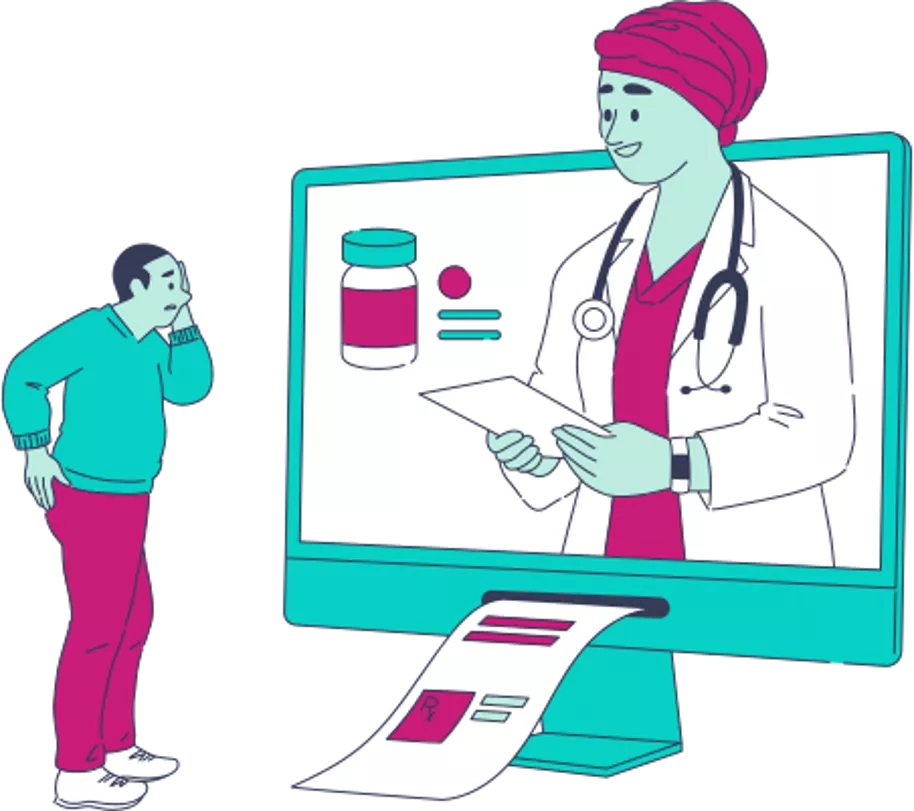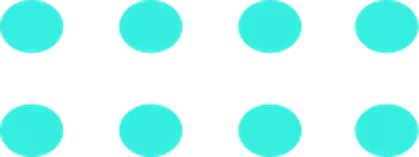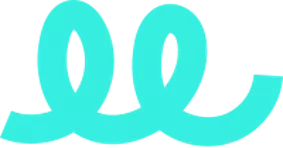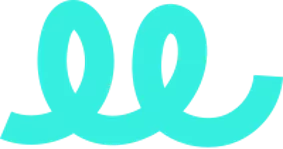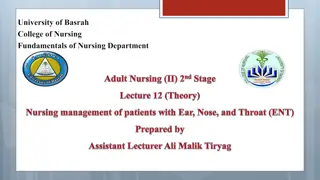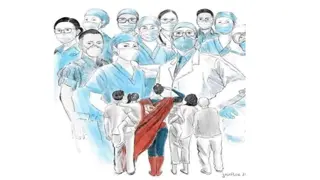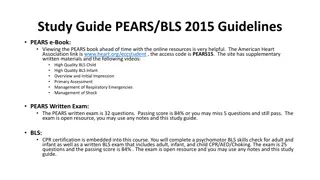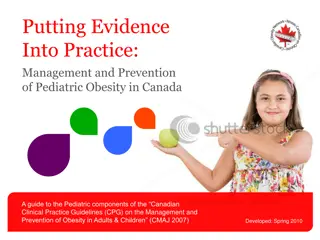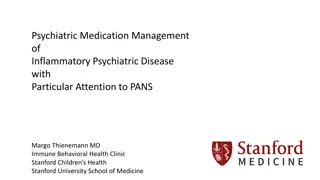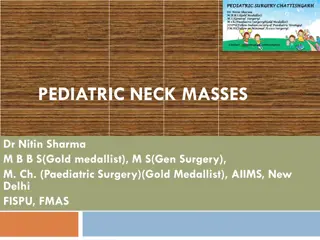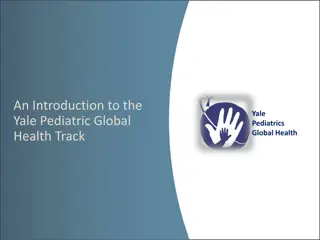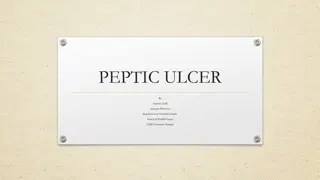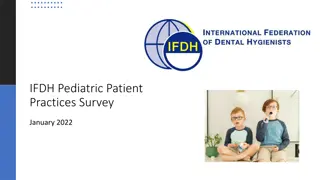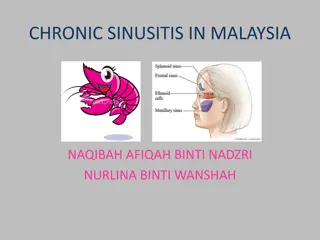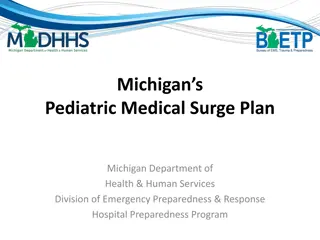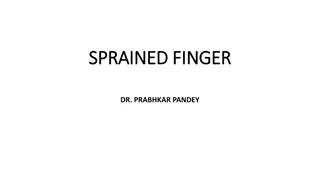Understanding Pediatric Rhinosinusitis: Symptoms, Causes, and Treatment
Dr. Sharad, a highly experienced ear, nose, and throat (ENT) specialist, will deliver a detailed presentation on pediatric rhinosinusitis. The presentation will cover a wide range of topics including an extensive analysis of the symptoms, underlying
Download Presentation

Please find below an Image/Link to download the presentation.
The content on the website is provided AS IS for your information and personal use only. It may not be sold, licensed, or shared on other websites without obtaining consent from the author. Download presentation by click this link. If you encounter any issues during the download, it is possible that the publisher has removed the file from their server.
E N D
Presentation Transcript
UNDERSTANDING PEDIATRIC RHINOSINUSITIS: S Y M P T O M S , C A U S E S , A N D T R E AT M E N T
WHAT IS PEDIATRIC RHINOSINUSITIS? PEDIATRIC RHINOSINUSITIS: INFLAMMATION OF THE SINUSES AND NASAL PASSAGES IN CHILDREN. Categories: Acute Rhinosinusitis: Lasts less than 30 days, often follows a cold or viral infection. Chronic Rhinosinusitis: Persists even with treatment, continuous symptoms affect quality of life.
CAUSES OF PEDIATRIC RHINOSINUSITIS SINUS INFLAMMATION BLOCKS MUCUS DRAINAGE. TRAPPED MUCUS LEADS TO INFECTION. OFTEN TRIGGERED BY: Viral infections (e.g., cold) Allergies Nasal irritants
SYMPTOMS OF PEDIATRIC RHINOSINUSITIS VARY BY AGE AND SEVERITY OF INFECTION. KEY SYMPTOMS: Nasal stuffiness and discharge Facial pain and pressure Coughing (especially at night) Fever Fatigue and irritability
NASAL STUFFINESS & DISCHARGE PERSISTENT NASAL CONGESTION FOR 10-14 DAYS. Thick yellow or green discharge. Difficulty breathing through the nose; mouth breathing common.
FACIAL PAIN & PRESSURE MORE COMMON IN OLDER CHILDREN. Pain around the eyes, forehead, and cheeks. Discomfort worsens when bending forward or lying down. Younger children may rub their face or show irritability.
COUGHING OFTEN RESULTS FROM POSTNASAL DRIP. Mucus drains down the throat, triggering a chronic cough. Cough is worse at night.
FEVER LOW-GRADE FEVER COMMON IN EARLY PHASES. High fever (above 102 F or 39 C) may indicate a severe infection. Seek medical attention if high fever is present.
FATIGUE & IRRITABILITY TIREDNESS DUE TO IMMUNE RESPONSE, POOR SLEEP FROM NASAL CONGESTION, OR FACIAL PAIN. Leads to crankiness, loss of appetite, and poor concentration.
WHEN TO SEEK MEDICAL HELP Cough or nasal discharge that worsens. SYMPTOMS LAST MORE THAN 10 DAYS WITHOUT IMPROVEMENT. Consult a healthcare professional for assessment and treatment plan. SEVERE FACIAL PAIN OR HIGH FEVER.
CONCLUSION Pediatric rhinosinusitis is common but treatable. Early recognition and intervention are key. Proper treatment can improve outcomes and reduce complications. Seek medical advice if symptoms persist or worsen.
Thank You Consult a healthcare provider for tailored treatment options for sinusitis. www.drsharadent.com Dr. Sharad ENT Dr. Sharad ENT Videos
